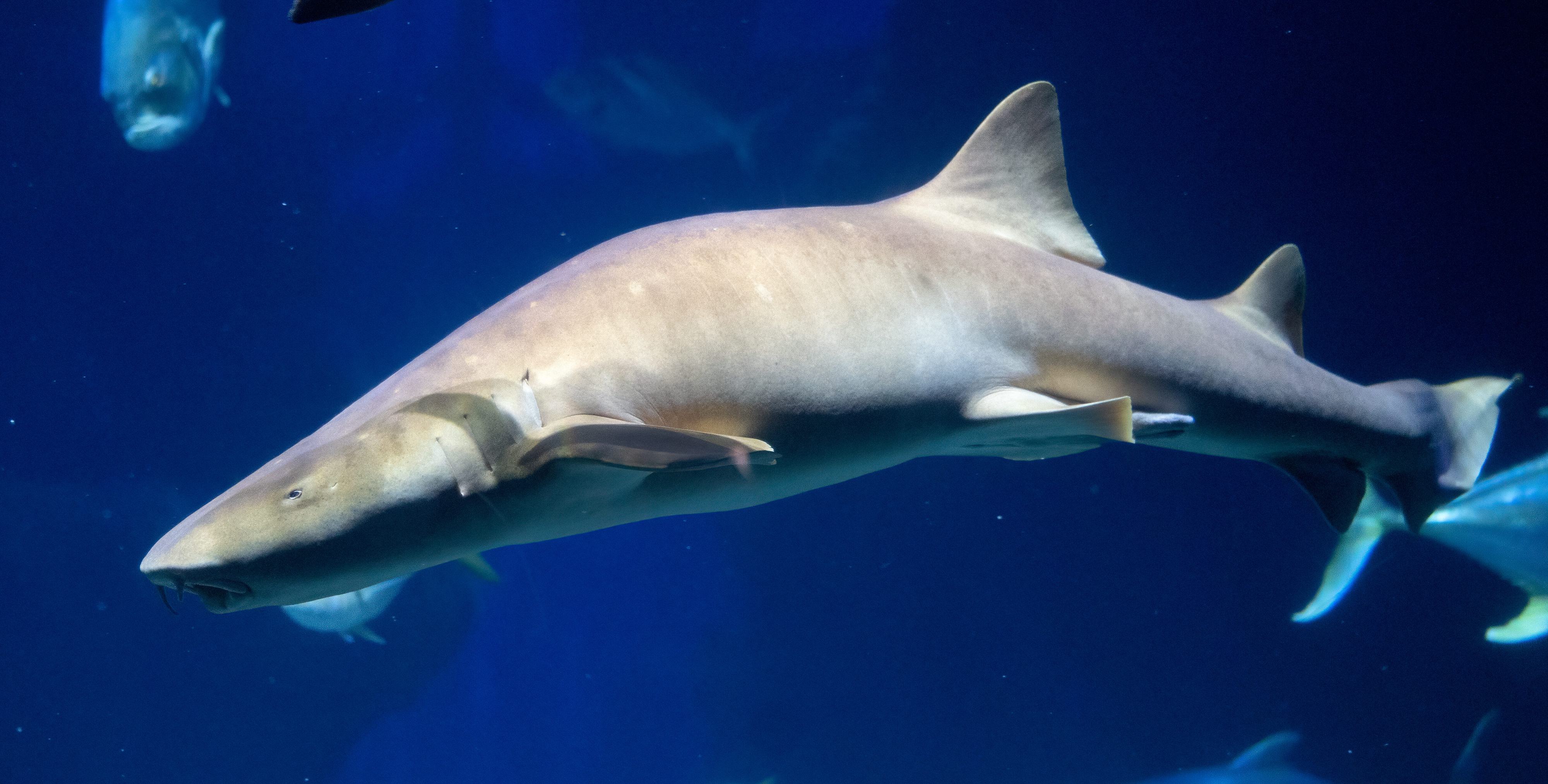Species Name: Ginglymostoma cirratum
This generally docile species is commonly found on reefs in the Atlantic and Pacific Oceans, and is easy to distinguish from other large sharks.

Species Name: Ginglymostoma cirratum
This generally docile species is commonly found on reefs in the Atlantic and Pacific Oceans, and is easy to distinguish from other large sharks.
Over 24 years.
Fish, shellfish, cepahalopods, and stingrays.
Coral and rock reefs within coastal waters.
Tropics and subtropics of the eastern and western Atlantic, as well as the eastern Pacific Ocean.
Length: From 7 feet up to almost 10 feet.
Weight: Up to 230 pounds.
These sharks have flattened bodies, round heads, and small eyes, with sandpaper-like skin in shades of brown. Their teeth are small and appear in several rows that are used to crush shellfish. Their mouths also have two whisker-like barbels similar to the ones on a catfish, which hang down and help them detect food in the sand. Female nurse sharks tend to be a bit larger than the males.
Diet
Though they are slower swimmers, they are quick hunters that will use suction to consume bottom-dwelling prey such as crustaceans, mollusks, stingrays, fishes, and invertebrates.
Habitat
Nurse sharks are frequently found on rock or coral reefs, and often rest in caves, nooks and crannies in the reef, or on the sandy ocean floor.
Many shark species are ram ventilators, meaning they have to move constantly to pass water over their gills and receive oxygen to their bloodstream. Nurse sharks, however, are capable of buccal pumping, meaning they can suck water over their gills while lying still - similar to how humans can draw air into our lungs without moving. This allows nurse sharks to spend most of the day inactive and resting, only hunting during the evening hours and at night. They are considered slower swimmers, except while hunting.
Reproductive Behavior
Sexual maturity for male sharks occurs at around 18 years, with females maturing at around 20-22 years old. They produce one litter every other year, with between 20-25 pups in a litter.
Relationship With Humans
Nurse sharks are usually docile and non-aggressive towards humans, though they may bite in self-defense when a human gets too close and startles them.
Concerns
Nurse sharks are hunted for meat, leather, and other products in certain countries along the western Atlantic. They will take bait and fish from traps, which leads some fishermen to kill them to save their catch. They end up as by-catch in the commercial fishery in U.S. waters, though they are released alive. Populations numbers are data deficient, but their numbers are decreasing as a result of overfishing.

Homer
Homer lives in our Norfolk Canyon Aquarium alongside our other large shark species: the sandbar sharks, and our sand tiger shark.

Vulnerable (VU)
A taxon is Vulnerable (VU) when the best available evidence indicates that it meets any of the criteria A to E for Vulnerable, and it is therefore considered to be facing a high risk of extinction in the wild.
IUCN Red ListWant a more up-close and personal experience with our sharks? Book a Behind-the-Scenes Tour with us!